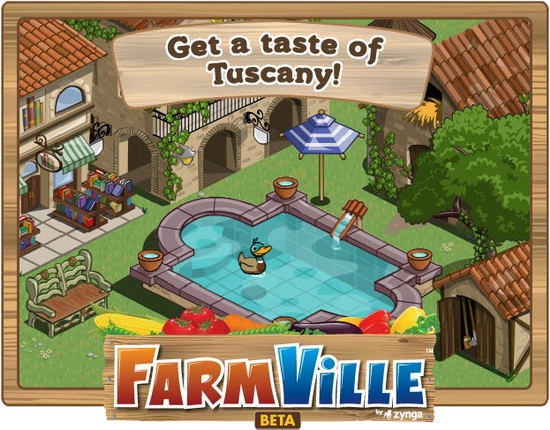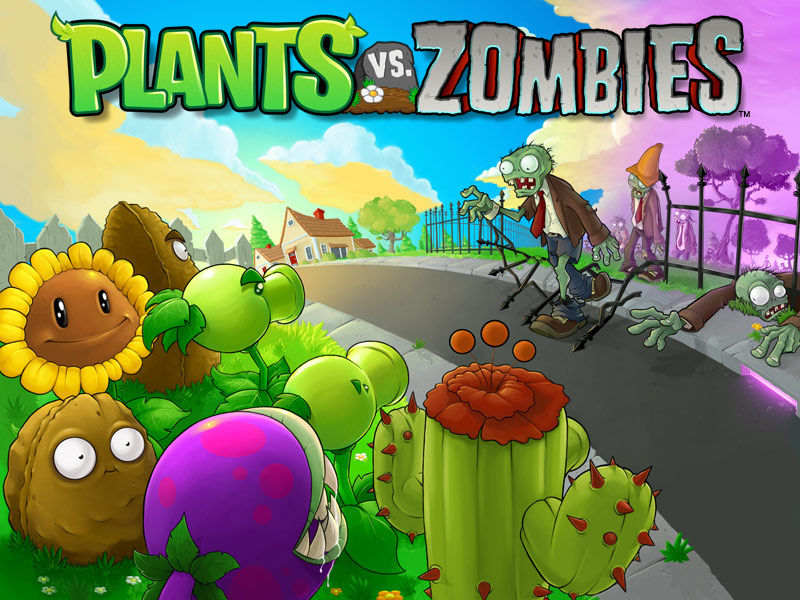PopCap副总裁Chouteau将社交游戏比作联网版室内游戏
几年前,Angela Morales 收到了来自她母亲的一封Facebook邀请函,请求她注册一款名为FarmVille的新游戏。与传统的单机游戏不同,FarmVille整个游戏本身都在网络中——业内人士将其称为“社交游戏”,这种游戏可以连结全球数百万玩家。
在旧金山公司Zynga开发的FarmVille游戏中,玩家的任务主要是对虚拟农田的日常打理:玩家们养猪、种作物,还可以光顾别人的农田,与别的农场主交流经验。
Morales也曾经对这类游戏表示怀疑。她与丈夫生住在休斯敦,当时她刚刚成立了一家图像公司,并没有什么空闲时间。尽管Morales从不认为自己是核心游戏玩家,但随着收到各式各样的邀请,她最终接受了。
这个决定改变了Morales的生活。在一开始的几个月,她深深沉迷在FarmVille的农场世界中,每天花数小时打理虚拟农场,喂养虚拟动物。2009年9月,她成立了博客FarmVilleFreak.com,这是一个FarmVille相关的粉丝网页。之后它成为了全世界最受欢迎的非官方FarmVille粉丝网站。
尽管最近她与丈夫有了第一个孩子, 但她认为自己至少三天就要登录一次FarmVille。对此,她打趣地说,“我很庆幸在我读大学时并没有FarmVille。”
对很多非社交游戏玩家而言,有人会愿意每周花数小时在大力一款虚拟农场这件事情是非常不可思议的。显然这些反对FarmVille的人更享受在现实的蓝天下打理真正的花园。
然而,Morales的故事并不是特例。在市场研究公司NPD Group最近的一份报告中,5680万美国人,即美国六岁以上人口的60%都曾在过去的3个月中玩过社交游戏。而据Information Solutions Group的研究指出,英国和美国合计的社交游戏市场消费者超过了1亿。
目前,大部分社交游戏玩家都是在社交网站Facebook上玩社交游戏。Facebook的首席执行官Mark Zuckerberg曾表示Facebook的全球用户已经超过5亿人。在今年8月,网络用户平均花费41.1分钟在Facebook网站上,这一数据超越了谷歌网站。
社交媒介趋势研究公司Inside Network的创办者Justin Smith认为,从前玩家一般是到沃尔玛等商场买视屏游戏,然后回家安装在电脑中玩。但现在Facebook则为游戏提供了更广泛的玩家基础。这改变了游戏产业的一般运作方式,这是长久以来游戏业的又一次巨大改革。
另外,Smith还指出,社交游戏玩家具有多样性的特点。社交游戏市场的玩家有老有少。而有些玩家乐于饲养虚拟动物,而对Xbox 360或任天堂 Wii并不感兴趣。NPD Group也指出,美国社交游戏玩家中有53%是女性,而35%的人则从没有玩过视频游戏。但是,对任天堂 Wii等传统单机游戏开发商而言最可怕的可能是社交游戏的开发比视频游戏减少了20%的游戏软硬件投入。NPD Group’公司的Anita Frazier表示,越来越多玩家钟情于社交游戏,整个游戏产业也意识到了这一趋势,并要有所调整。
基本上所有社交游戏都算得上是一种“倒退”,操作简单,图像粗糙,音效也不好。但是对社交游戏开发者而言,简单的外表并不是劣势。恰恰相反,简单才是成功的关键。
PopCap Games的副总裁Garth Chouteau曾开发过多款社交游戏,其中就包括备受玩家欢迎的《植物大战僵尸》。对这一问题,他指出,“我们的游戏必须能够在使用8年的电脑上运行良好,否则就是失败。”另外,他还表示,现在看来制作极为粗糙的《宝石迷阵》仍然十分有趣,这是因为游戏的趣味性与其物理外表并没有直接联系,而是关于游戏经验。
Chouteau把社交媒介游戏比作了19世纪盛行的室内游戏。在室内游戏,团体也是一个重要的组成部分——玩家不会像在现代单机游戏中那样独自坐在阴暗的角落与绿色外形人单打独斗——而更多的是与现实的朋友们交流,聊聊八卦等。Chouteau认为在第一波视频游戏改革中,游戏丧失了与朋友或同学交流互动的元素。视频游戏没有像Facebook那样令玩家与朋友相互交流。但现在我们的科技进步了,我们可以进行即时对话。
Kabam Games公司的首席产品专员Andrew Sheppard承认社交游戏并不像单机游戏那样复杂,因此它们吸引玩家的方式也有所不同。但社交游戏能令玩家聚在一起。首先,社交游戏的的门槛低——玩社交游戏并不需要什么游戏经验。另外,社交游戏内置在Facebook网站中,其中有很多游戏体验的协作元素。在此,Mr. Sheppard提起了一款Kabam公司的游戏Kingdoms of Camelot,据 Inside Networks称,这款游戏吸引了600万月活跃用户。
Sheppard说道,“我们经常听说玩家们在周末聚会庆祝游戏中的胜利。这些人之间的友谊就来自于他们共同的游戏体验。”
当然,社交游戏也有些方面备受争议。PopCap或Kabam等社交游戏开发公司有各种收入渠道,例如游戏内置广告,付费游戏,或所谓的“微交易”等。以Kingdoms of Camelot为例,玩家可以选择购买从5美元到500美元不等“宝石”。而实际上,很多玩家都买了。(NPD Group报导,仅有10%的玩家花费现实货币玩社交游戏,而另外11%的表示可能将来愿意在社交游戏中投入现金。)
尽管遇到些许问题,大部分业内人士仍然预计社交游戏市场将继续扩大。投资公司Lazard Capital的分析师Colin Sebastian在访问中表示,当人们将社交游戏看作一种认识更多Facebook朋友的渠道时,社交游戏将面临更多的机会。同样,投资银行ThinkEquity也估计游戏内置广告和虚拟商品等将在2010年创下20亿美元的营收。
Kabam公司的运营主管Chris Carvalho预计在接下来的几年,“硬核”单机游戏开发商将会继续进军Facebook社交游戏。他表示,“我们相信休闲游戏开发仍有很大发展空间,将传统游戏中的受欢迎机制融入社交游戏中将可以开发更加引人入胜的游戏作品。引用韦恩·格雷茨基的一句话,我们并不想知道产业的现状,我们更想知道未来的发展方向——向着更加健全的游戏体验。” (本文由游戏邦/gamerboom.com编译)
A couple of years ago, Angela Morales received a Facebook invitation from her mother, begging her to sign up for a newish game called FarmVille. Unlike traditional console titles, FarmVille takes place entirely online – the industry term d’art is “social gaming” – and allows collaboration among millions of users around the globe.
In the case of FarmVille, which is produced by San Francisco-based Zynga, the purpose of the game is to handle the day-to-day operations of a virtual farm. Players feed the pigs, monitor the crops, and work to expand their pixilated holdings; meanwhile, other users can patronize the farm, or simply drop in to lend advice.
Ms. Morales was skeptical. She had recently started a photography company in Houston, where she lives with her husband, and free time was hard to find. Moreover, she had never really considered herself much of a hard-core gamer. But the invitations kept coming, and eventually, her defenses worn down, she decided to accept.
The decision changed Morales life. Within a few months, she was deeply immersed in the world of FarmVille, spending hours a day tilling virtual fields, and breeding virtual animals. In September 2009, she founded the blog FarmVilleFreak.com, a fan page dedicated to all things FarmVille; it has since become the most popular unofficial FarmVille fan site in the world (and yes, FarmVille fan sites are legion).
Although she and her husband recently had their first child, Morales estimates that she still signs on to FarmVille at least three times a day. “I can say that I’m thankful FarmVille didn’t exist while I was still in college,” Morales joked recently.
The idea that anyone would want to spend hours a week tending a fantasy farm may strikes non-social gamers as ridiculous – surely the denizens of FarmVille would be happier mucking around in a real garden, under a real summer sky. And yet Morales’s story is hardly unique. NPD Group, a market research firm, recently reported that 56.8 million American consumers – or 20 percent of the US population over the age of 6 – had played a social-media game in the past three months. In Britain and the United States combined, the size of the market is an incredible 100 million consumers, according to a survey conducted by Information Solutions Group.
Most of these gamers are playing on Facebook, a social network that is itself expanding rapidly. This year, Facebook CEO Mark Zuckerberg announced that Facebook had topped the 500 million-member mark worldwide; in August, Internet users spent more time – 41.1 million minutes – on Facebook than they did on all Google sites combined.
“Historically, video games were bought at Wal-Mart and played at home or on a PC,” says Justin Smith, the founder of Inside Network, a research firm that studies social-media trends. “What Facebook has done is open up gaming to a much wider audience – it has provided a platform for people who wouldn’t even normally consider themselves gamers. It’s changing the way that the gaming business is going to work. This is the biggest revolution in the gaming industry in quite a while.”
As Mr. Smith suggests, social gamers are a diverse bunch. The social-gaming market comprises older gamers, younger gamers, and gamers who are happy to breed virtual pigs but wouldn’t be caught dead playing an Xbox 360 or Nintendo Wii. NPD Group says that 53 percent of American social gamers are women; 35 percent had never played a video game before. Perhaps most dangerously for makers of consoles such as the Nintendo Wii, social gamers reported having spent 20 percent less on gaming hardware or software since they took up network gaming.
“As more players are drawn into these games, the entire games industry is going to feel, and have to adjust to, the impact,” NPD Group’s Anita Frazier noted in a statement accompanying the study.
The majority of social-gaming titles are decidedly retro affairs – the gameplay is simplistic, the graphics are stripped down to a Nintendo NES level, the sound effects are tinny at worst and corny at best. In fact, for social-gaming studios, a simplistic presentation isn’t just an unfortunate side effect of the production process – a simplistic presentation is the point.
“Our games should work perfectly well on an eight-year-old PC, and if they don’t, then we’ve failed,” says Garth Chouteau, vice president for communications at PopCap Games. PopCap – which commissioned the Information Solutions Group survey – makes a range of social-gaming titles, including Plants vs. Zombies, and the bestselling puzzle title Bejeweled. “The crudest possible version of Bejeweled would still be fun to play,” Mr. Chouteau says. “It would still be fun because the fun isn’t tied to the physical look of the game; it’s about the experience.”
Chouteau likens the appeal of social-media games to the old-style parlor games played in the 19th century. With parlor gaming, community was part of the appeal – you weren’t sitting alone in a dark room, doing solo battle with a clan of bright-green aliens, as many modern console gamers do today. You were talking, you were gossiping, you were connecting with real people. “I think the idea of spending time with colleagues and friends was kind of lost in the first few waves of the video-game revolution,” Chouteau says. “There wasn’t something like Facebook that gave us immediate and ongoing access to our friends. But now we’re at the point, technologically speaking, where we can let people back into the parlor.”
Andrew Sheppard, the chief product officer at Kabam Games, acknowledges that social games don’t have the same complexity as console games – and that they may not immerse the gamer in exactly the same way. But he points out that social games are uniquely capable of bringing people together. For one, there’s a low barrier of entry – you don’t have to be a veteran gamer to enjoy a social game. Furthermore, because social-gaming titles work inside Facebook, there’s a raucously collaborative element to the gameplay experience. Mr. Sheppard points to the Kabam title Kingdoms of Camelot, a game that Inside Networks says attracts more than 6 million monthly users.
“We regularly hear about [Kingdoms of Camelot] gamers meeting up on weekends to celebrate their in-game victories,” Sheppard says. “The friendships these people have are a direct result of the experiences they shared inside the game.”
Some aspects of social gaming, of course, remain controversial. Social-game creators, from PopCap to Kabam, get their revenue from a variety of sources, including in-game advertising, promotion for existing for-pay titles, and so-called “microtranscations” – upgrades or premium objects that users must pay hard, nonvirtual currency to obtain. In Kingdoms of Camelot, for instance, a user can choose to purchase packets of in-game “gems,” for costs ranging from $5 to $500. This premium content is no way intrinsic to the game – a user can get along perfectly well without a big bag of gems. And in fact, most do. (NPD Group says only 10 percent of gamers spend real money playing social titles; 11 percent indicated that they would be willing to do so in the future.)
Still, most industry insiders expect the social-gaming market to continue to expand, despite the hiccups. Colin Sebastian, an analyst at investment firm Lazard Capital, said in an interview that he expects to see “more opportunity for social gaming, particularly since people seem to be gravitating towards games as a means to interact with their friends and acquaintances on Facebook and other platforms.” Mr. Sebastian is not alone: Investment bank ThinkEquity has estimated that in-game advertisements and virtual good sales will together bring a revenue stream of $2 billion by 2012.
Chris Carvalho, the chief operating officer at Kabam, predicts that in coming years, “hard-core” console gamers will continue to migrate to social-gaming titles on Facebook – and the studios will continue to produce. “We believe there is a huge opportunity to create real games, games that bring popular mechanics from traditional games to social gamers and drive deeper, more lasting engagement,” Mr. Carvalho says. “To borrow a line from Wayne Gretzky, we don’t want to skate to where the industry is, but to skate to where the industry is going – towards more robust gaming experiences.” (Source:Csmonitor)









































 闽公网安备35020302001549号
闽公网安备35020302001549号